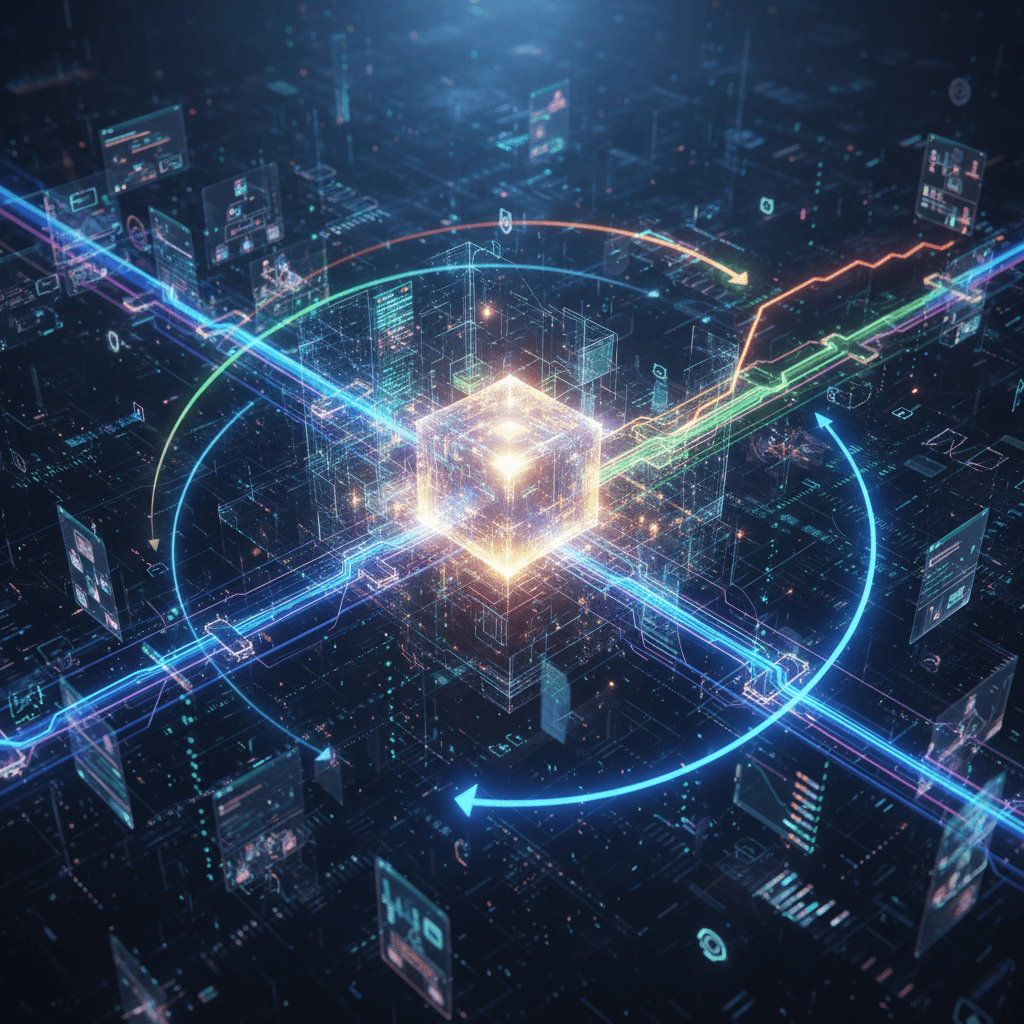AI Learns from Its Own Actions, Boosting Robustness and Autonomy
AI agents now learn from their own experiences, breaking free from human data and complex rewards to build adaptable intelligence.
October 19, 2025

In a significant step toward creating more autonomous and adaptable artificial intelligence, researchers from Meta and The Ohio State University have introduced a novel training paradigm called "Early Experience." This approach allows AI agents to learn from the consequences of their own actions, breaking away from the heavy reliance on curated human demonstrations or explicit reward signals that have traditionally defined AI training. The new method addresses critical bottlenecks that have hampered the development of language agents capable of navigating complex, real-world tasks, offering a scalable and efficient path to more robust AI.
The development of capable AI agents has long been dominated by two primary training philosophies: imitation learning and reinforcement learning. Imitation learning, also known as supervised fine-tuning, teaches an agent by having it mimic vast datasets of expert human demonstrations.[1][2] While effective for learning specific tasks, this method suffers from significant drawbacks.[1] The creation of high-quality expert data is expensive and time-consuming, and these datasets inherently cover only a narrow slice of possible scenarios.[3][2][4] This leads to agents that are proficient at following a known script but lack the ability to generalize or recover from errors when they encounter unfamiliar situations, a problem known as distribution drift.[3] The second pillar, reinforcement learning (RL), allows agents to learn through trial and error by receiving rewards or penalties for their actions.[1] This promises greater adaptability, but it faces its own hurdles. Designing effective reward functions for complex, multi-step tasks can be incredibly difficult, and many real-world environments, like navigating a website or using a new software tool, lack clear or immediate reward signals.[1][5][2]
The "Early Experience" paradigm carves a middle path between these two extremes.[5][2][4] Instead of relying on perfect expert data or waiting for a reward, the agent is allowed to simply explore and experiment within its environment.[1][4] The data generated during this unstructured interaction—the agent's own actions and the resulting outcomes—becomes its curriculum.[1] This self-generated data serves as a form of implicit supervision, where the agent learns the direct cause and effect of its actions without needing an external reward signal.[3][5][6] This approach is powerful because it is cheap, scalable, and diverse; the agent is not confined to the "happy path" of expert demonstrations and gets to see what happens when things go wrong, building a more comprehensive understanding of its environment.[1]
The researchers have proposed and studied two specific strategies within the Early Experience framework: Implicit World Modeling (IWM) and Self-Reflection (SR). With Implicit World Modeling, the agent is trained to predict the future state of the environment based on its current state and a chosen action.[5][7][8][9] For instance, it learns to anticipate what a webpage will look like after it clicks a certain button. This process helps the agent internalize the environment's dynamics, essentially building a mental model of how the world works.[7][8] The second strategy, Self-Reflection, is a more introspective process. Here, the agent compares a suboptimal action it took with an expert's action in the same situation. It then generates a natural language explanation about why the expert’s choice led to a better outcome, using this contrastive analysis to refine its own decision-making and reasoning abilities.[5][7][9][6]
The implications of this new training method are substantial, promising to accelerate the push toward more autonomous and capable AI. In evaluations across eight diverse environments, including web navigation, long-horizon planning, and multi-tool use, the Early Experience methods consistently improved agent effectiveness.[5][7][6] Agents trained with this paradigm showed an average absolute improvement of 9.6 percentage points in success rates and 9.4 points in out-of-domain generalization compared to those trained with standard imitation learning.[7] This demonstrates that learning from one's own mistakes and experiments leads to more robust and adaptable behaviors.[5] Furthermore, the approach serves as a powerful foundation for subsequent reinforcement learning. When used as a pre-training step in environments where rewards are available, Early Experience provides a much stronger starting point, allowing RL algorithms to achieve higher performance ceilings more quickly.[5][7][8]
In conclusion, the Early Experience paradigm represents a pragmatic and potentially transformative shift in how AI agents are trained. By allowing agents to become active participants in their own education—learning from a rich spectrum of cause and effect through self-generated experience—this method addresses the core limitations of scalability and generalization that have constrained progress. It moves the field beyond simple imitation and difficult reward engineering, paving the way for AI assistants that can more reliably and autonomously operate in the messy, unpredictable digital and real worlds. This focus on learning from interaction, not just instruction, is a critical step toward the long-term goal of creating AI that can learn and improve on its own.[5][8]